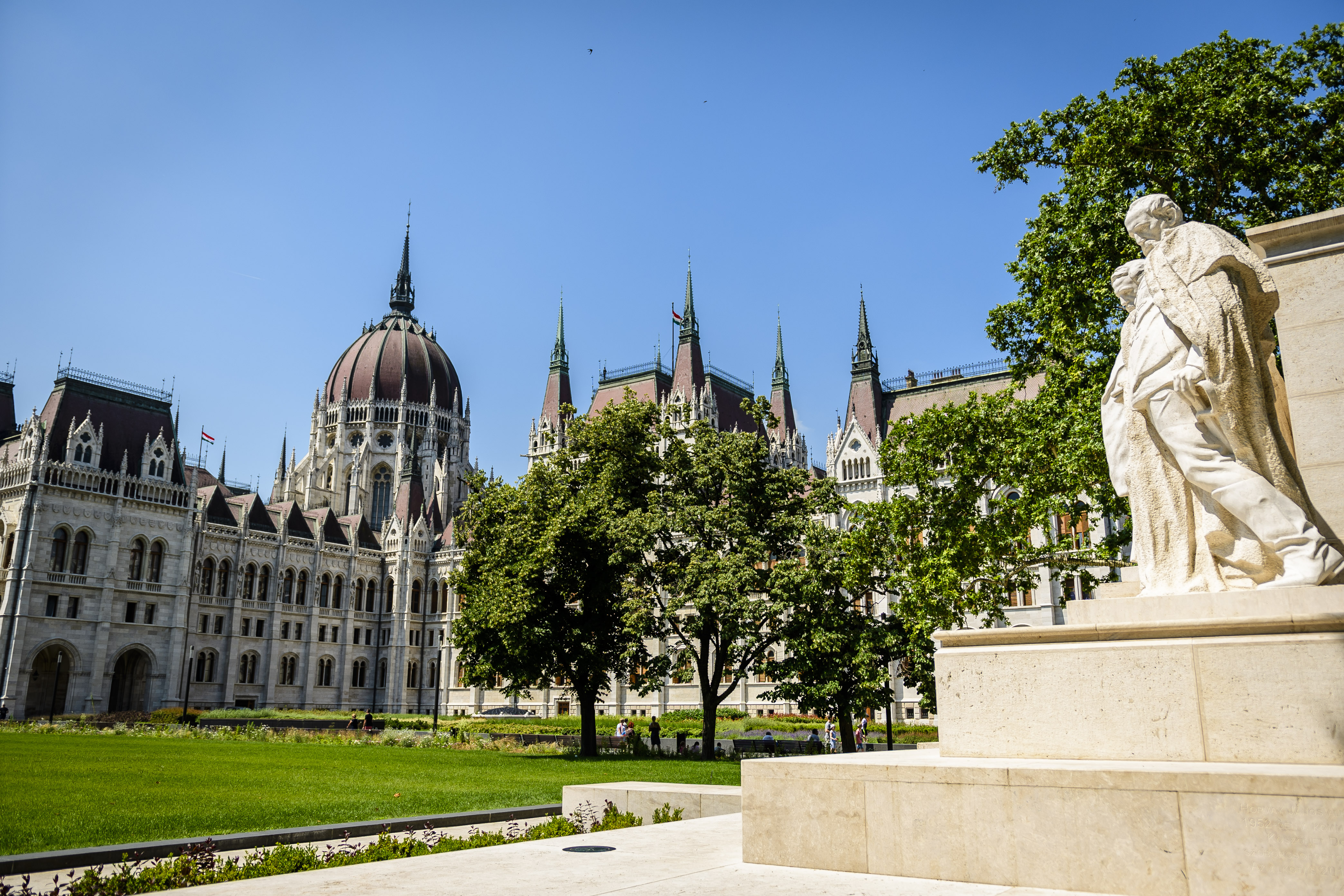The square in its present form first appeared in
1804 thanks to a plan drawn up by János Hild. Of course, he did not yet envisage the
square as it looks today. He parcelled out the northern half, while
he earmarked a market for the southern half.
This became just a large pit and
rubbish dump, which they started to fill in 1844, which is probably where
the first name of the square comes from: Tömő (‘Fill’) tér. Nothing came of the
subdivision either, because the place was taken over by the military, who built
a small harbour and vehicle storage.

Parliament, designed by Imre Steindl, began to be
built in 1885 and was completed in 1902, but already by 1898 it was thought –
since the Ministry of Agriculture and the Kúria building were already in place – that the square would play an increasingly important role in the
in the life of the country.
The name Tömő tér was changed to Országház (‘Parliament’)
tér. During the Aster Revolution after World War I, at the suggestion of writer
Gyula Krúdy, it was briefly renamed Köztársaság (‘Republic’) tér. At the end of
1919 it got its old name back but only until 1927. The square received its current
name on the 125th anniversary of the birth of Lajos Kossuth, and János Horvay’s
monument to the great statesman was also erected at that time.

Over the decades, the square has hardly changed at
all. There was war-time damage and traffic has been regulated. Changes
primarily affected the monuments on the square. The statue of Hungarian revolutionary leader Ferenc Rákóczi, unveiled in 1937 on the 200th anniversary of his death, stands undisturbed and has only undergone
renovation once, when the reconstruction of Kossuth tér took place in 2010.
The
rest of the statues fell foul of the Communist régime after World War II, and
were removed. Original works or their authentic copies were later returned to their
locations, no later than 2010.

This is how Kossuth himself, István Tisza, Count
Gyula Andrássy and István Nagyatádi Szabó, all eminent politicians of the Habsburg
era, returned to Kossuth tér.
The statue of poet Attila József, which sat in
the place of the Andrássy statue for a couple of decades, remained in the
square, but in 2014 it was moved to the banks of the Danube. The life of
Kossuth tér was disrupted a little during the construction of metro line 2, when the
station was opened to the travelling public on 22 December 1972.































